Viewing: Blog Posts Tagged with: Cynthia Levinson, Most Recent at Top [Help]
Results 1 - 4 of 4
Blog: Writing Nonfiction for Children (Login to Add to MyJacketFlap)
JacketFlap tags: Cynthia Levinson, Watch out for FLying Kids, Book Review, children's nonfiction, Add a tag
Blog: I.N.K.: Interesting Non fiction for Kids (Login to Add to MyJacketFlap)
JacketFlap tags: picture books, illustrations, Cynthia Levinson, Add a tag
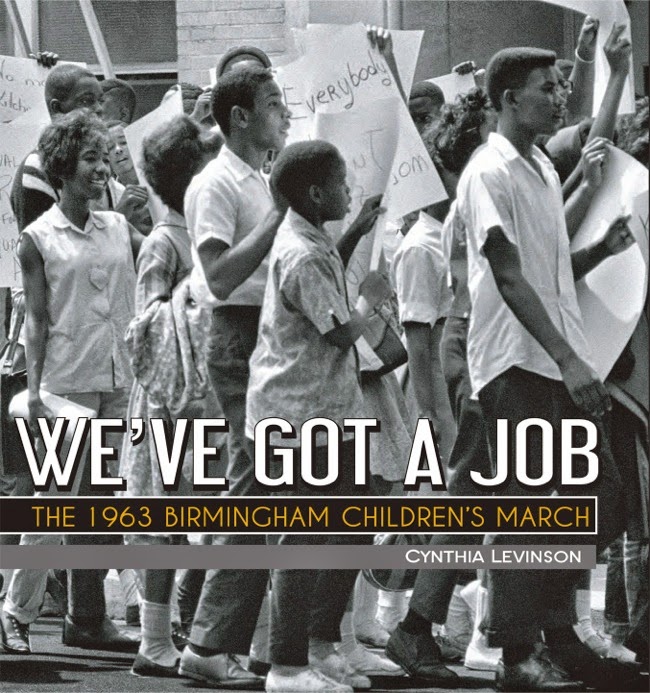 With my first nonfiction picture book under development, I’ve begun to think about—and look hard at—the illustrations in nonfiction books for younger readers. Although it was challenging to ferret out photographs, pamphlets, legal documents, and memorabilia for images in my first nonfiction middle-grade, We’ve Got a Job: The 1963 Birmingham Children’s March, they served at least two purposes. Above all, as primary sources, they informed me about the times and events I was writing about. In addition, placed in the book, they broke the text and provided both visual interest and verisimilitude for readers.
With my first nonfiction picture book under development, I’ve begun to think about—and look hard at—the illustrations in nonfiction books for younger readers. Although it was challenging to ferret out photographs, pamphlets, legal documents, and memorabilia for images in my first nonfiction middle-grade, We’ve Got a Job: The 1963 Birmingham Children’s March, they served at least two purposes. Above all, as primary sources, they informed me about the times and events I was writing about. In addition, placed in the book, they broke the text and provided both visual interest and verisimilitude for readers.Illustrations, I’m realizing, are very different. They’re not artifacts. They’re the artists’ imagined representations of time, place, events, and mood. Although they can be very precise and accurate, water colors, collages, oils, etc., don’t necessarily show the reader exactly how the spur attached to the boot, say, or that the temperature was 99 degrees. They can be more atmospheric and still be valid—not just valid but also emotionally true.
I’m beginning to think of the artwork in nonfiction picture books as the visual voice of the book. And, just as I struggled to make the textual voice in The Youngest Marcher authentic, even when I wasn’t quoting someone, I’ve been looking at illustrations for authenticity—even if they’re not photographically accurate.
Here’s a range of pictorial styles, in recently published and lauded picture books, from the concrete to the imagistic. (Warning: I am not an artist! These are merely my impressions.)
Brian Floca’s illustrations in Locomotive are as precise and detailed as those in any Richard Scarry word
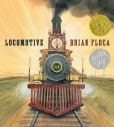
book. After looking at the end papers’ labeled diagrams, I’d recognize a piston rod, throttle lever, and Johnson Bar anywhere! And the accuracy of those drawings tells me that every other illustration must be right also, even the water-colored elevation map of the Great Basin in the frontispiece and the sketch of a man chasing his horse, who must have been spooked by an approaching train. Floca not only conveys depth of information but he also gives the reader confidence that he knows what he’s writing—and drawing—about.
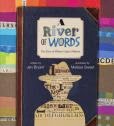 Similarly, many of Melissa Sweet’s illustrations, such as the medical drawings, in Jen Bryant’s A River of Words: The Story of William Carlos Williams seem to be completely accurate. Other, blurrier ones, however, appear metaphoric, which seems appropriate for a book about a man who was a poet as well as a physician. Sweet’s blocky collages display a conglomeration on each page of neat facts and lyrical tone.
Similarly, many of Melissa Sweet’s illustrations, such as the medical drawings, in Jen Bryant’s A River of Words: The Story of William Carlos Williams seem to be completely accurate. Other, blurrier ones, however, appear metaphoric, which seems appropriate for a book about a man who was a poet as well as a physician. Sweet’s blocky collages display a conglomeration on each page of neat facts and lyrical tone.To Dare Mighty Things: The Life of Theodore Roosevelt, written by Doreen Rappaport and illustrated by C. F. Payne, takes the realistic cum impressionistic approach a step further. Clothing is appropriate to the times, of course, as are saddles and ten-dollar bills. Furthermore, Payne might well have drawn the faces of politicians and bystanders by copying them exactly
 from contemporary sketchbooks or photographs. Today’s facial recognition software could practically identify them! Yet, snow falling in the Dakota Territory looks like unnaturally soft polka-dots, and Teddy sometimes appears unrealistically eyeless behind his spectacles— appropriate for someone who was hard-of-seeing. And, in a spread of young Teddy’s dream, he seems to float along with a butterfly and a polar bear. As with Sweet’s illustrations, both accuracy and mood prevail.
from contemporary sketchbooks or photographs. Today’s facial recognition software could practically identify them! Yet, snow falling in the Dakota Territory looks like unnaturally soft polka-dots, and Teddy sometimes appears unrealistically eyeless behind his spectacles— appropriate for someone who was hard-of-seeing. And, in a spread of young Teddy’s dream, he seems to float along with a butterfly and a polar bear. As with Sweet’s illustrations, both accuracy and mood prevail. There are many superlative nonfiction picture books I could focus on. Georgia in Hawaii: When Georgia O’Keefe Painted What She Pleased, written by Amy Novesky and illustrated by Yuyi Morales, must have been particularly challenging for Morales because it needed to convey both the truth of the paintings by its artist-subject and also the mood of O’Keefe’s lush surroundings.
There are many superlative nonfiction picture books I could focus on. Georgia in Hawaii: When Georgia O’Keefe Painted What She Pleased, written by Amy Novesky and illustrated by Yuyi Morales, must have been particularly challenging for Morales because it needed to convey both the truth of the paintings by its artist-subject and also the mood of O’Keefe’s lush surroundings.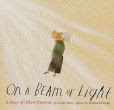 Possibly at the furthest extreme of dispensing with concrete accuracy while maintaining recognizability might be On a Beam of Light: A Story of Albert Einstein by author Jennifer Berne. Most of illustrator Vladimir Radunsky’s images are sweetly cartoon-like. Yet, Einstein is obvious with his brushy mustache and distracted gaze.
Possibly at the furthest extreme of dispensing with concrete accuracy while maintaining recognizability might be On a Beam of Light: A Story of Albert Einstein by author Jennifer Berne. Most of illustrator Vladimir Radunsky’s images are sweetly cartoon-like. Yet, Einstein is obvious with his brushy mustache and distracted gaze.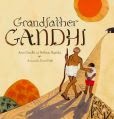 I’d like to round off my exploration of visuals in nonfiction picture books with Grandfather Gandhiby Arun Gandhi and my friend Bethany Hegedus and illustrated by Evan Turk. Cloth and paint collages of the Mahatma’s posture and emaciated frame make him instantly recognizable, even in crowd scenes. The vivid background coloration sequence from beige to yellow to orange to red and back to beige again conveys not only India’s searing heat but also young Arun’s moods, from awe of his famous grandfather to anger and back, appropriately, to peace with himself and his family. Readers will sense the place, the times, and the moods without the need for photographic detail.
I’d like to round off my exploration of visuals in nonfiction picture books with Grandfather Gandhiby Arun Gandhi and my friend Bethany Hegedus and illustrated by Evan Turk. Cloth and paint collages of the Mahatma’s posture and emaciated frame make him instantly recognizable, even in crowd scenes. The vivid background coloration sequence from beige to yellow to orange to red and back to beige again conveys not only India’s searing heat but also young Arun’s moods, from awe of his famous grandfather to anger and back, appropriately, to peace with himself and his family. Readers will sense the place, the times, and the moods without the need for photographic detail.I’m curious to see how Vanessa Brantley-Newton, the wonderful illustrator of The Youngest Marcher, will choose to visualize its voice. Will she portray scenes of, say, jailed civil rights protesters by drawing hundreds of them packed into a cell, just the way they endured those stifling conditions? Or, will she take a more atmospheric approach?
The Youngest Marcher focuses on one of the people highlighted in We’ve Got a Job. While the books address the same topic, the readership is entirely different. Seeing them side-by-side will further inform me about the various ways that text and visuals can enhance each other. Check back in in January 2016 to see how she accounts for the same facts for a different audience.
Blog: GregLSBlog (Login to Add to MyJacketFlap)
JacketFlap tags: Cynthia Leitich Smith, P.J. Hoover, Bridget Zinn, Liz Garton Scanlon, Nikki Loftin, Austin author, Cynthia Levinson, Cory Putnam Oakes, Susan Kralovansky, Add a tag
A couple weeks ago, Cyn, Chris Barton, and Tim Tingle were featured authors at an event at the LBJ Library sponsored by Reading is Fundamental. Here are some pics:
 |
| Tim and Chris watch while Cyn displays JINGLE DANCER |
 |
| Day Glo Brothers, Saltypie, and Jingle Dancer |
 |
| Chris, Cyn, and Tim sign their books |
 |
| Joy Hein, Kathi Appelt, and Cyn like Ike. |
 |
| Monkey in the middle |
 |
| P.J. Hoover, Susan Kralovansky, Nikki Loftin, Cory Oakes |
 |
| Liz Garton Scanlon, Me, and Cynthia Levinson |
 |
| Cyn and me. Photo courtesy Cory Oakes |
 |
| Title Page! |
Blog: Tara Lazar (Login to Add to MyJacketFlap)
JacketFlap tags: Picture Books, Non-Fiction, PiBoIdMo 2011, Cynthia Levinson, We've Got a Job, Add a tag
I was so heartened to read Carol Hampton Rasco’s opening blog post on PiBoIdMo because she made two comments that really resonate with me. Well, she said one, and then she quoted a savvy but jaded six-year-old.
First, she noted that the top picture-book choice of teachers, reading specialists, and Reading is Fundamental volunteers is NONFICTION. That buoyed me because that’s what I write. In fact, my agent, Erin Murphy, has two of my nonfiction picture books under submission right now. The six-year-old, however, quickly brought me down to earth. As he peered at a terrific looking book, he said, “it doesn’t look like a true fact book, they’re usually boring.” That’s good news for the book he was enjoying but “aargh” for the others.
 We can all cite other terrific NF PBs. Some of my favorites include MIND YOUR MANNERS, ALICE ROOSEVELT! by Leslie Kimmelman; 14 COWS FOR AMERICA by Carmen Agra Deedy, which is available in both English and Spanish (which is perfect, since Rasco also said that bilingual books rank among the top-three most-wanted); and YOURS FOR JUSTICE, IDA B. WELLS by Philip Dray. Citing counter-examples to the six-year-old’s complaint, however, is beside the point. It’s his experience and his impression that count. So, what can we, as NfPiBoWr (that’s nonfiction picture-book writers) do to alter his conclusion that “true fact” books are boring?
We can all cite other terrific NF PBs. Some of my favorites include MIND YOUR MANNERS, ALICE ROOSEVELT! by Leslie Kimmelman; 14 COWS FOR AMERICA by Carmen Agra Deedy, which is available in both English and Spanish (which is perfect, since Rasco also said that bilingual books rank among the top-three most-wanted); and YOURS FOR JUSTICE, IDA B. WELLS by Philip Dray. Citing counter-examples to the six-year-old’s complaint, however, is beside the point. It’s his experience and his impression that count. So, what can we, as NfPiBoWr (that’s nonfiction picture-book writers) do to alter his conclusion that “true fact” books are boring?
 Language and illustrations, of course, contribute hugely to enlivening books that happen to be accurate. Rasco also commented that what adults want for the children they read and give books to are books that are “eye and mind catching.” Great illustrations catch the eye; lilting, lively, lyrical text captures the mind. Neither of these is quite sufficient, however, if the topic—and we are dealing with ideas during PiBoIdMo here—is lackluster.
Language and illustrations, of course, contribute hugely to enlivening books that happen to be accurate. Rasco also commented that what adults want for the children they read and give books to are books that are “eye and mind catching.” Great illustrations catch the eye; lilting, lively, lyrical text captures the mind. Neither of these is quite sufficient, however, if the topic—and we are dealing with ideas during PiBoIdMo here—is lackluster.
As a nonfiction writer, my ideas come from a number of places—the news, teacher-friends who lament the lack of good books about X, expert-friends who share fascinating stories about their research, and sheer curiosity. But, the biggest source of my ideas is Carus.
Who?
Carus is the family of magazines that is sometimes abbreviated to “COBBLESTONE.” These include, for various age groups, not only this magazine about American History but also DIG on archeology, APPLESEEDS and FACES on culture, CALLIOPE on history, ODYSSEY on science, and others. It’s not that I steal ideas from other writers; I steal ideas from myself. Here’s what I mean.
Most of these magazines are theme-based, and a couple of times a year, I check their Writer’s Guides to see what intrigues me. What I see now in ASK, a science magazine for six- to nine-year-olds, for instance, are calls for proposals for nonfiction articles on dreams and dreaming, “all




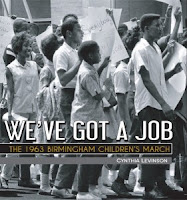

Thanks for the great recommendations, Cynthia. And I have to say, I love that you used the word “transmogrify” in your post – great word!
I remember looking at magazine submission themes a few years ago, but never thought to look there for ideas! Thank you for bringing this idea back to the top of my list! Hooray for non-fiction!
Thanks for the idea to look to nonfiction magazines for springboard ideas! And I hope your ms submissions are accepted!
Thanks for such good, solid advice, Cynthia. And thanks for the links and for using the word “transmogrify”!
I love writing non-fiction for kids and teens and just yesterday got an assignment from a teen publication to write about the Dutch flower market (probably helped by the fact that I live Holland and am a hop, skip and a jump awat from the world’s most beautiful tulip farms). But, I’m wondering how you know when an idea is ripe for a picture book vs. an article? Are there tell-tale signs that lead you to explore your idea in one format vs. another? Thanks for sharing your ideas with us!
Thanks for the great post. I love love love non-fiction. Most everything I write is non-fiction or flavored by it. I’ve sold to Carus in the past, so I think I’ll stop typing and try stealing from myself for today’s new pb idea(s)! Thank you. Thank you.
I’ve never tried non-fiction but I love the way you get your ideas. It’s a win win situation if you know those subjects are sought after. Good luck with your books and thank you.
Cynthia,
I agree that the Cobblestone magazine collection is very inspiring. I wrote teacher guides for Cobblestone magazine for two subscription years and was impressed with each article. After that, I decided to query AppleSeeds with proposals for articles. I am happy to say that I am currently published in their November/December’s issue on Civil War Kids. Maybe a book will be next. Thanks for sharing a great tip.
I’ve not attempted a NF PB (yet), but like the idea of meandering through kids mags in hope that a character/story pops!
Cynthia, passing your post along to a friend who currently writes NF articles for kids and is looking to move into the NF PB market.
Enjoyed the post!
I used to get “Ranger Rick” and you’re right. The only “fiction” is the ‘games section’ at the back of the magazine. I think that non-fiction picture books could be made more interesting by having the right illustrations/pictures along with interesting facts about the topic.
What a great well of ideas — thanks for sharing one of your sources of inspiration!